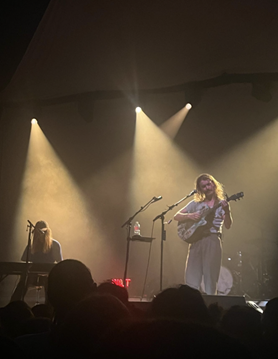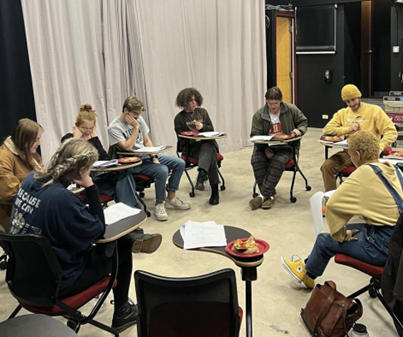
If you want to get an idea of how the state of British indie rock has changed over the past four years, Post War Years might be the clearest example to observe. Hailing from England’s Leamington Spa, Post War Years began as a wispy group of cardigan-wearing hairdos dabbling in post-punk, electronic and math rock. It was a unique mix, for sure, but it still placed them quite comfortably alongside contemporaries such as Foals or frequent tour partners Everything Everything.
Now, however, Britain’s music landscape looks quite different (and a lot more encoded), and though the hairdos and cardigans remain, Post War Years’ follow-up record, Galapagos, is a bold and somewhat reactive step in a new direction. A four-year gestation period for a second LP is nearly unheard of for a young band such as this, and it’s clear that Post War Years has used the extra time to largely reinvent itself sonically. Where the group’s debut, The Greats and the Happenings, was rather sparingly produced and highlighted the group’s live instrumentation, Galapagos is highly electronic and sounds absolutely massive, and might be one of the most ambitiously produced indie records of the past few years. The basic elements of the group’s sound (animalistic vocals from dueling frontmen and jagged polyrhythms) still form the record’s foundation, but there are times when it’s hard to discern any sort of live band at work here.
In terms of the album’s merit, this production-heavy approach can be both a blessing and a curse. For the most part, when the quality of the songwriting lines up with the group’s sonic ambition, it results in some of the most exciting and colorful indie music you’re likely to hear these days. On a couple tracks, however, the group seems to dabble in too many sounds and effects, resulting in an over-processed, cacophonous sound. In general, though, the album’s highs vastly outweigh its lows, and if you’re looking for a big, bold and unique blend of electronic and indie-pop to soundtrack the end of winter quarter, Galapagos will fit the bill.
The record opens with its three most immediate tracks, all of which have been previously released over the past year or so in the form of singles and EPs. “All Eyes” is a bold, dramatic opener with an explosive chorus based around a stirring, highly altered and almost frightening vocal loop. From the moment the album begins, it becomes clear that Galapagos is best listened to on a decent sound system—throw on some in-ear headphones for the opener’s late guitar climax and you’ll feel like your eardrums are being massaged. Meanwhile, “Glass House” is Post War Years’ most straightforward pop song yet, with a bright, addictive chorus based around the line: “What chance, in a glass house, have we?”
After you get past the single-dominated opening section, the record takes a slight (but perceptible) turn for a more experimental, expansive sound. The euphoric anthem “Be Someone” matches the pop appeal of the prior three tracks with an extremely bold aesthetic, resulting in the album’s best track. “Mellotron,” on the other hand, is probably the darkest thing on here, with an earth-shattering chorus based around an aggressive vocal line.
As you might be able to tell, Post War Years’ new brand of music isn’t for the timid listener. In many ways, Galapagos is the sonic equivalent of watching an IMAX in 3D—often beautiful or impressive, but the album is sometimes demanding of the senses. It’s when the production overshadows the songwriting that demanding turns into outright tiring.
This is mostly limited to two songs: “Growl” and “Lost Winter.” The former, which Post War Years originally released in a free live EP last May, is transformed from a nimble little ball of energy into a rather messy missed opportunity. The latter, similarly, tries to wield a few too many sound effects and production flourishes at once, which cuts the appeal of an otherwise well-constructed song. You see elements of this weakness in other tracks (the somewhat clamorous chorus of “Volcano,” or the rather haphazard end portion of closer “God”), but in general Post War Years doesn’t let its self-indulgence spill over into too much other territory.
That being said, if Galapagos’ one fault lies in the excessive ambitions of its architects, well … I’ll take it. Though a pop record at heart, this is about the furthest thing from generic you’ll ever hear, and it holds a variety of moments that can only be described as stunning. For either the casual listener or the indie fanatic, this record is a mostly fabulous change of pace from a truly gifted group, and though Post War Years may be relatively unknown now, Galapagos is a treasure that both demands—and deserves—to be heard.











